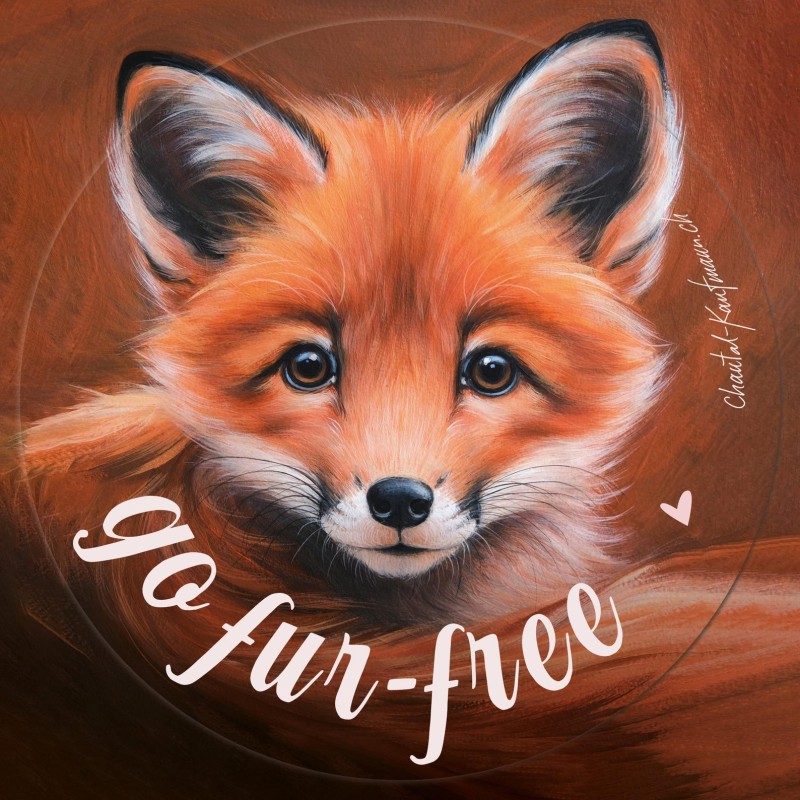How to Give Your Dog a Bath (naturally)
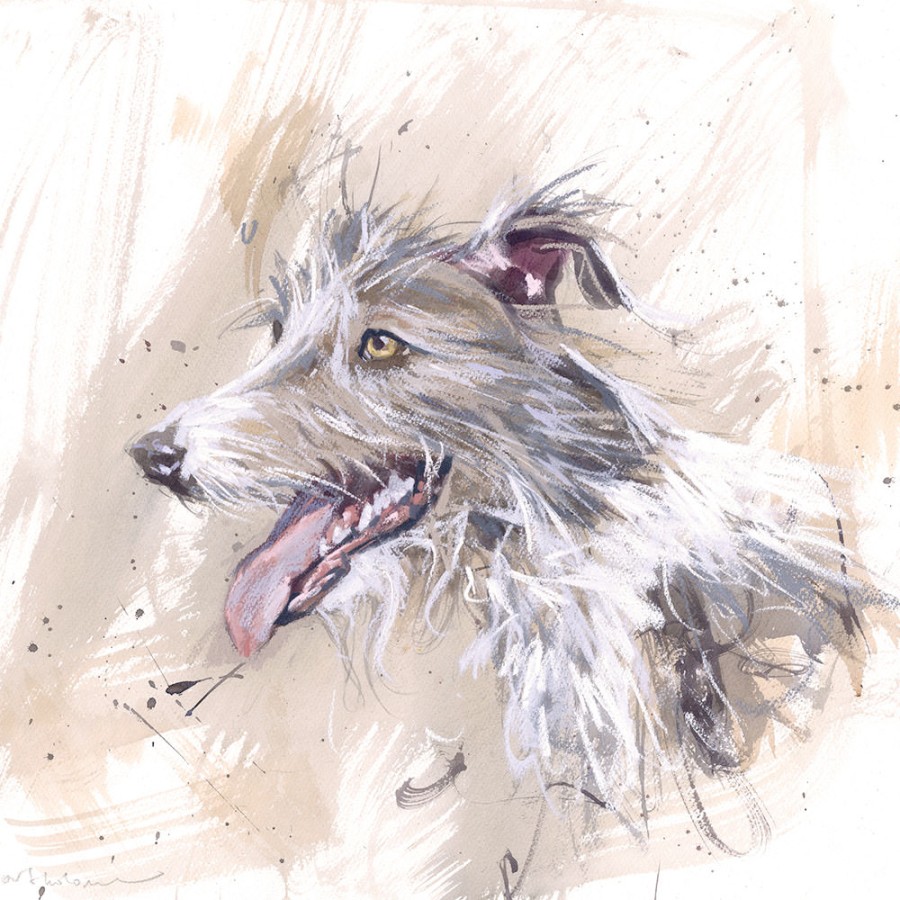
A calm bath leaves your dog looking good and feeling relaxed. Lots of guardians worry that their dogs will squirm, hate the water or freak out. But bath time doesn’t have to be tough. Follow these straightforward steps and you’ll both enjoy a peaceful wash, even if it’s your first try or your pup gets nervous around water.
RSPCA recommend giving dogs a bath at least every three months, depending on lifestyle (if they get muddy, salty from the ocean or roll in fox poo!) Dogs with short coats should be fine to be washed every few months. Whereas long-haired dogs may need more regular washes.
Prepare the Bath Area
Set up everything before your dog steps in. This first move goes a long way. A calm, ready space helps both you and your pup feel less rushed. It also stops any puddles, slips, or things you forgot mid-wash. Take a few minutes to get organised and you’ll both be in for a much smoother bath.
Choose the Right Water Temperature
Get the water just right before calling your dog over.
Experts suggest to use warm water around 37 ° Celsius. Pop a mat or tub in the bath/sink, to avoid wobbles (walk-in showers, paddling pools or outdoors may be easier for large secured dogs).
You don’t need a fancy thermometer. Just use your wrist to test the water, the same way you would if checking a baby’s bath. It should feel warm but never hot. If the water feels cool or cold, it might make your dog tense up or shiver. On the other hand, water that’s too hot can burn their sensitive skin
Avoid sudden temperature changes during rinsing to keep things comfortable.
Gather Dog‑Friendly Supplies
Round up all your supplies before bath time. This saves you dashing off mid-wash with a soggy dog in tow. You’ll want products made for dogs, as their skin is more sensitive than ours.
Here’s a handy checklist:
- Natural, non‑scented dog shampoo
- Cup or handheld showerhead for rinsing
- Slip‑resistant mat for safe footing
- Big, absorbent towel
- Brush (before or after the bath if needed)
Never use human shampoos or soaps. They can dry out your dog’s skin or cause itching. A mild, fragrance-free shampoo keeps things simple. If your pup has allergies or sensitive skin, look for hypoallergenic options.
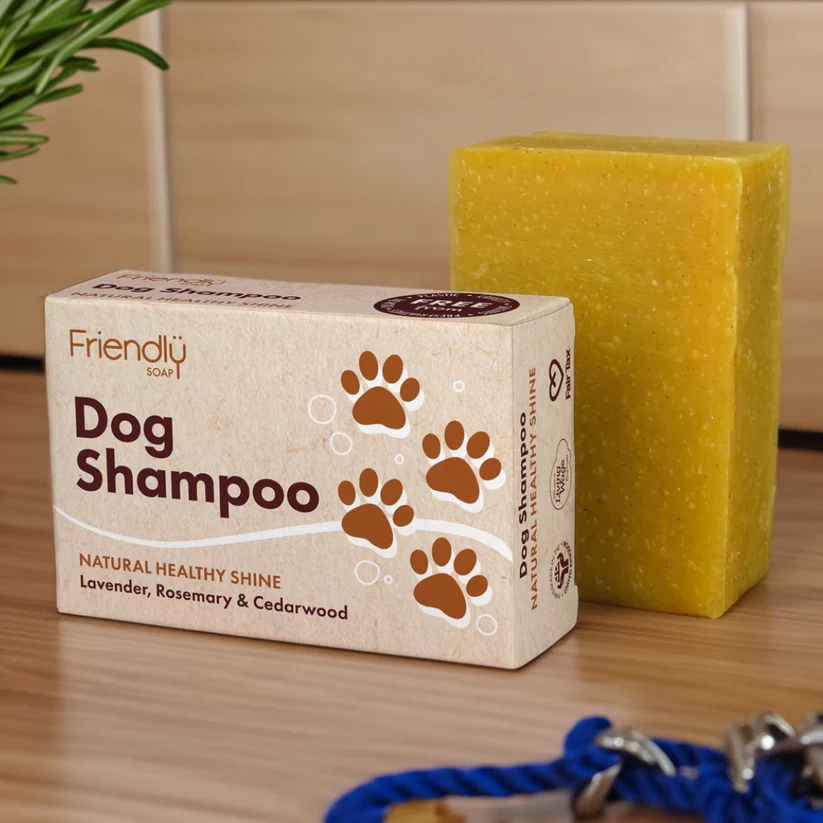
Friendly Soap Dog Shampoo is made from natural ingredients, with essential oils in professional formulations. But avoid for allergies or sensitive skin, and never use bars with essential oils on cats.
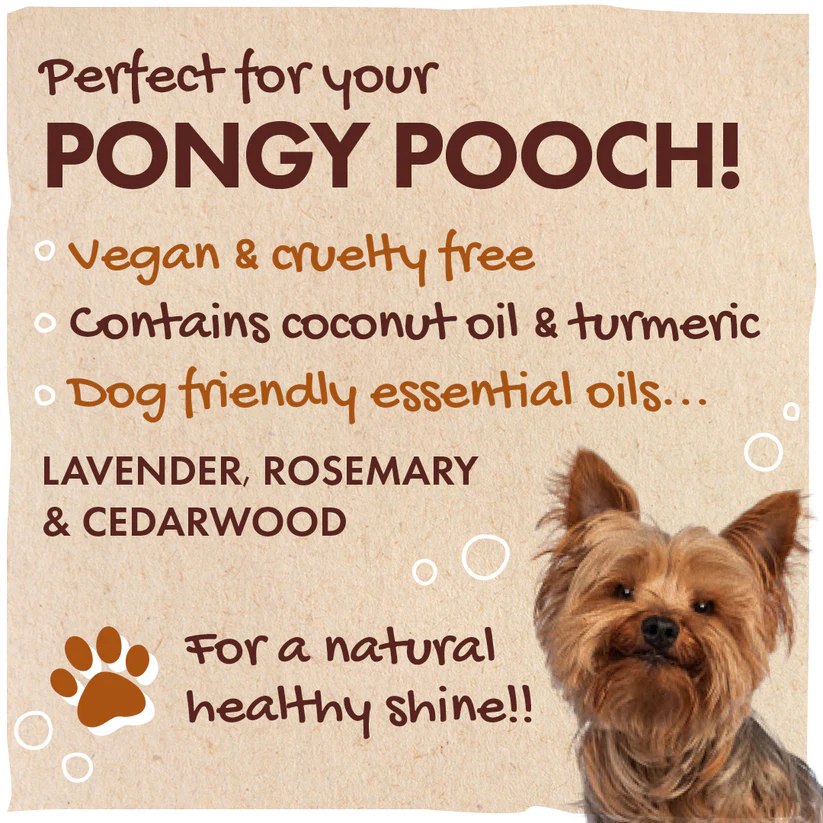
Set Up a Slip‑Resistant Surface
Most dogs resist stepping into a slippery tub. Even confident pups can get anxious if they can’t get a good grip. Put down a rubber bath mat or fold a towel over the tub floor. The stable surface keeps your dog steady and helps them relax.
- A rubber mat offers the best grip.
- A folded towel can work in a pinch. Wet it so it sticks to the tub better.
- Safe footing prevents panic and protects your dog’s joints.
Create a Relaxed Atmosphere
Setting the right mood can make a world of difference. Dogs pick up on your energy as well as the environment. Try these easy changes to set the scene:
- Speak in a calm, steady voice. Skip the high-pitched excitement. Use slow, gentle speech to keep your dog’s heartbeat in check.
- Keep the room warm. A heated room protects against chills, especially for nervous pups.
- Dim the lights if you can. Bright, harsh light can make dogs edgy, while softer light helps them relax.
Check for Fleas and Ticks
Before you start any rinsing or rubbing, take a careful look through your dog’s coat. Fleas and ticks can turn a gentle wash into a bigger mess if left unchecked.
- Part the fur with your fingers and look for tiny dark specks (fleas) or little bumps (ticks).
- Remove any fleas or ticks straight away. Use a flea comb, tissue, or tick remover if you have one.
You don’t want drowning fleas or dislodged ticks swimming in the tub. That’s not only gross for you, but stressful for your dog. Checking over the coat keeps things cleaner and safer.
Use Gentle Touch and Praise
A soft touch and kind words work wonders, especially if your dog feels jumpy about baths. How you handle your pet makes all the difference.
- Pet and stroke your dog’s chest and belly as you set up. Avoid rough sudden movements, and keep your hands relaxed.
- Reward calm behaviour with treats. A tasty snack or extra fuss when your dog stays still or shows patience helps them link bath time with good feelings.
- Speak softly and keep your tone friendly. Dogs notice pitch and calmness in your voice almost more than the words.
Avoid Getting Water in Sensitive Areas
Use a gentle stream of water beginning at hindquarters, and avoid getting water in a dog’s ears, nose, mouth or eyes. Water in these areas can be uncomfortable, cause irritation, and sometimes spark a fear of future baths.
- Shield the head with your hand or a small cup. Place your hand gently over the ear openings or guide the cup so water flows away from the face.
- Wet the body first and save the face for last, if needed. Most dogs don’t need their face washed unless they’ve rolled in something.
- Use a damp cloth for delicate cleaning. Wipe around the snout and ears instead of pouring water directly. This approach is much less scary for most dogs.
Preventing water from getting into the wrong places avoids panic and builds trust with your pet.
Apply Non‑Scented Natural Shampoo
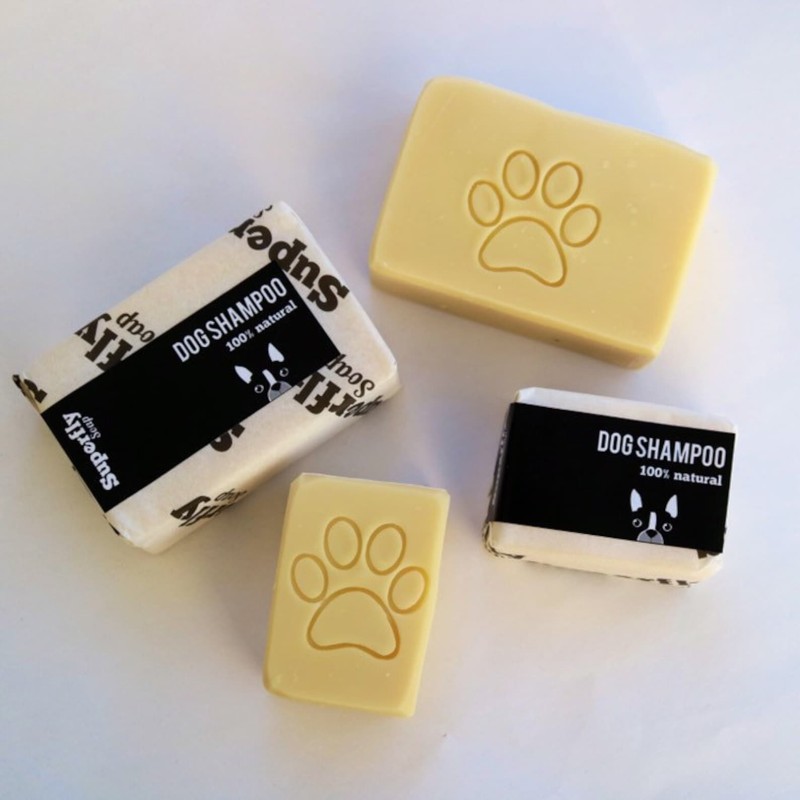
Superfly unscented Dog Shampoo
Never use human shampoos on pets (skin PH is different, unscented is better as essential oils can be toxic to pets, especially cats). For this reason, never use scents or candles near pets (air rooms after use, and avoid if pets sleep in bedrooms).
- Pour a small amount into your hands before touching your dog.
- Lather softly using your fingers and palms, focusing on the back, sides, and legs. Dogs aren’t wild about suds piling up on their head and tail, so keep the thickest foam for the larger, less sensitive areas.
- Avoid fragranced formulas. Most dogs dislike strong smells, and some odours can linger long after the bath.
A light, neutral shampoo helps reduce the risk of allergies and doesn’t cover up your dog’s natural scent, which is important for their comfort and confidence.
Rinse Thoroughly but Gently
Shampoo left behind can irritate the skin, cause itching, and undo all your hard work. Proper rinsing is key to a smooth, stress-free bath.
- Use a cup or a handheld shower on gentle flow. Pour water slowly over the fur, starting from the neck and moving down toward the tail.
- Check for soap in thicker coats by running your fingers through the hair as you rinse.
- Repeat the rinse in tricky spots like the belly, armpits, and under the tail.
Be patient and make sure you remove all traces of shampoo. If the fur feels stiff or slippery, keep rinsing. Your dog will thank you with softer skin and less scratching later.
Remove Salt After Snowy Walks
Winter walks on salted pavements can bring hidden problems. Salt and grit can stick to your dog’s paws, legs, and belly, leading to dry, sore, or cracked skin.
It’s good to rinse paws after snowy walks with fresh lukewarm water, to remove rock salt which can burn inside at higher temperatures. EcoGrit recommends safer alternatives.
- Wipe paws and fur with a damp towel to remove any remaining salt or chemicals.
- Check between the toes and pads for trapped grit and small cuts.
Taking a minute or two to wash off salt after every snowy walk helps prevent sore feet and bigger vet visits. Dogs with long coats or sensitive paws are especially at risk, so make this part of your cold-weather routine.
Pat Dry with a Towel First
Always reach for a large, soft towel as soon as bath time is over. Wrap your dog snugly but gently, covering as much of their body as you can. Instead of using a rubbing motion, press the towel against their fur to soak up the water. Rubbing hard can twist and tangle the coat, especially if your dog has long or curly fur.
Many dogs love this towelling part—it feels like a cuddle and helps them relax after the fuss of the bath. Take your time and keep your touch calm. Start with the back and sides, then move to the legs and tail.
If you need a second towel for thick fur, that’s fine too. Keeping the drying process gentle means you avoid knots and keep your dog feeling safe.
Are Hair Dryers Safe?
It’s best to dry your dog naturally, as human hairdryers use heat. Pet groomers sometimes use heat-free dog hair-dryers that are better tolerated. If you do use a hairdryer, use the lowest heat setting to prevent dry skin and burns, and hold it at least 15cm away from your dog’s fur, and keep it moving.
Most dogs won’t like it either, due to the noise. For best results, skip the dryer and stick with towels. The goal is to make drying quick, safe, and as calm as possible.
Brush to Prevent Mats
While your dog’s fur is still damp, pick up a wide‑tooth comb or a slicker brush. Start brushing at the tips and work your way to the base of the coat. This pulls out any loose hairs and stops mats before they start. Mats can be painful to remove later and make future baths harder for you and your dog.
Focus on places that get tangled easily, such as behind the ears, under the collar, around the legs, and the tail. Short-haired breeds only need a quick brush, but longer coats benefit from a few extra minutes. If you hit a snag, don’t yank. Hold the fur above the tangle and work through it gently.
Check Ears and Nose for Moisture
After drying the coat, pay special attention to your dog’s ears and nose. Use a corner of your towel or a soft cloth to gently dry around and just inside the ear flaps. Never stick anything deep into your dog’s ears; a light wipe is enough.
Leftover moisture in the ears can lead to infection, especially in breeds with floppy ears or heavy fur around the head. If your dog lets you, flip the ear flap back for a moment to let everything air out. For the nose, wipe gently along the nostrils to remove any splashed water. Take care not to irritate sensitive skin.
Regularly checking these areas helps you spot problems early, such as redness, swelling, or a foul smell. Quick checks at every bath keep your pup healthy and comfortable.



